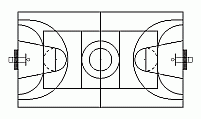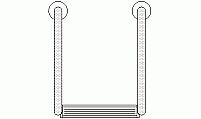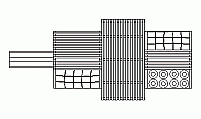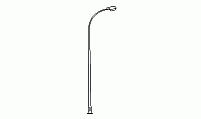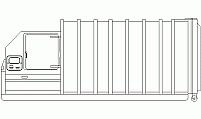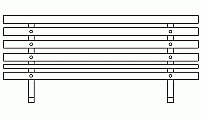CAD Blocks categories
 3D models
3D models home furniture
home furniture sanitary ware - bathrooms
sanitary ware - bathrooms professional equipment
professional equipment doors and windows
doors and windows people and animals
people and animals plants and trees
plants and trees vehicles - transports
vehicles - transports architectural details
architectural details mechanical - electrical
mechanical - electrical urban planning - civil works
urban planning - civil works safety health construction
safety health construction accessible design
accessible design drawing sheet
drawing sheet signals
signals construction machinery
construction machinery accessories and objects
accessories and objects maps and street maps
maps and street maps
Download Free side view Pool Diving Platform CAD Block

size: 9 kb
category: Athletic fields
related categories:
description: Precise CAD block of a pool diving platform, showcasing a robust design with secure anchoring points. Ideal for architectural and engineering projects involving recreational or professional swimming pools.
file extension: .dwg CAD - AutoCAD software
Comprehensive Guide to Pool Diving Platform Design and Features
Elevate Your Pool Design with Professional Diving Platforms
Pool diving platforms are essential components in competitive and recreational aquatic facilities, providing a stable and elevated surface for divers to launch from. These structures, often featured in CAD blocks and AutoCAD drawings, are designed to withstand repeated use while ensuring safety and performance. Commonly referred to as diving boards, springboards, or jump stands, these elements are crucial for both professional competitions and leisure activities. The integration of diving platforms in CAD libraries enhances the ability to visualize and plan aquatic centers with precision, allowing architects and engineers to create accurate pool layouts that meet international standards.
Precision in Design: Standard Dimensions for Diving Platforms
When incorporating diving platforms into CAD models and engineering designs, accurate dimensions are crucial. According to international standards, the typical length of a diving platform ranges from 16 feet (4.88 meters) to 20 feet (6.10 meters). The width is generally 20 inches (0.51 meters) for springboards and 6.5 feet (1.98 meters) for platforms. The height above water level varies, with common heights being 1 meter (3.28 feet), 3 meters (9.84 feet), 5 meters (16.40 feet), 7.5 meters (24.61 feet), and 10 meters (32.81 feet).
Ensuring Safety: Clearance Requirements for Diving Platforms
Safety clearances are critical when designing diving platforms in CAD files and AutoCAD .dwg formats. The minimum water depth beneath the end of the board should be 11.5 feet (3.51 meters) for 1-meter boards and 12.5 feet (3.81 meters) for 3-meter boards. The horizontal clearance from the center of the board to the pool side should be at least 10 feet (3.05 meters). For multiple board installations, a minimum distance of 10 feet (3.05 meters) between boards is required. The ceiling height above the tip of the board should be at least 16 feet (4.88 meters) for indoor pools.
Engineering Excellence: Components and Materials of Diving Platforms
Diving platforms consist of several key components, each meticulously detailed in CAD symbols and engineering CAD models. The main parts include the board, fulcrum, anchor, and guardrails. Boards are typically made of laminated wood, aluminum, or fiberglass for optimal flexibility and durability. The fulcrum, a critical component for adjusting the board's spring, is usually constructed of corrosion-resistant metals. Anchors are often made of stainless steel or concrete for stability. Some advanced designs incorporate non-slip surfaces and adjustable fulcrums for enhanced performance.
Seamless Integration: Incorporating Diving Platforms in Pool Design
In architectural CAD blocks and pool design files, diving platforms play a pivotal role in the overall layout. Their placement must be carefully coordinated with other pool elements such as the deep end, pool walls, and deck space. CAD designs often illustrate the relationship between the platform and the pool's depth profile, ensuring proper water depth for safe diving. The integration of lighting, ladders, and guardrails relative to the platform position is also a critical consideration in comprehensive facility planning. These interrelationships are vital for creating functional and regulation-compliant pool designs in CAD libraries and AutoCAD block downloads
Diversity in Design: Exploring Diving Platform Variations
The market offers a wide array of diving platform designs, each catering to different needs and environments. Springboards provide flexibility for competitive diving, while rigid platforms offer stability for high dives. Adjustable fulcrum boards allow for customization of the board's responsiveness. Some designs feature dual boards for synchronized diving practice. Novice boards with lower heights and softer springs are available for training purposes. Specialized platforms with extra-wide decks cater to diving instruction.








